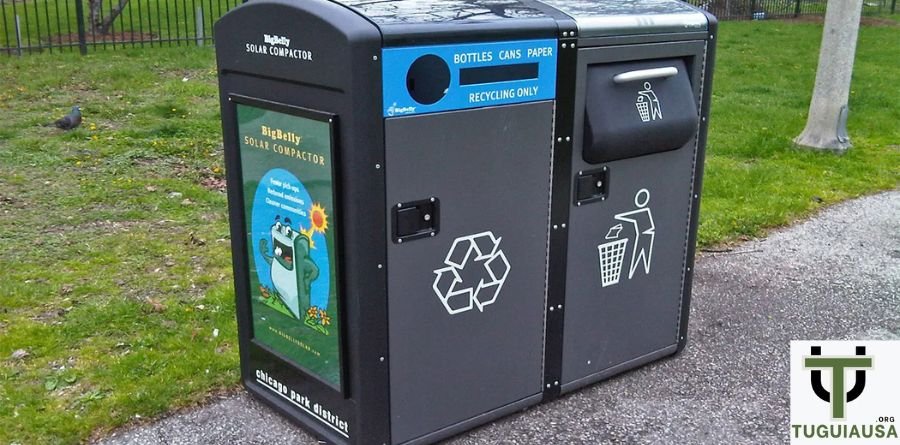As urban areas continue to expand and populations surge, the need for efficient, eco-friendly waste management becomes more urgent. Traditional waste collection methods often fall short in densely populated cities, where overflowing bins and inefficient routes plague sanitation departments. Enter solar powered compactors—a modern solution revolutionizing the way cities maintain cleanliness. This technology not only aligns with green energy goals but also drastically improves waste management processes. In this article, we delve deep into how solar powered compactors transform urban cleanliness, offering insights into their benefits, functioning, and impact on modern city life.
What Are Solar Powered Compactors?
Solar powered compactors are high-efficiency waste bins equipped with solar panels and compacting mechanisms. These devices harness solar energy to power a compactor that compresses waste, allowing the bin to hold up to five times more garbage than a traditional trash can. When waste reaches a certain level, sensors trigger the compactor to activate, reducing volume and extending the time between necessary collections.
Unlike conventional bins that overflow quickly and attract pests, solar powered compactors provide a cleaner and more controlled waste collection environment. Their built-in communication systems often notify sanitation workers when bins are full, minimizing unnecessary trips and ensuring that routes are managed efficiently. These compactors combine smart technology with renewable energy, paving the way for cleaner, smarter cities.
Reducing Urban Waste Overflow
One of the most visible signs of inadequate urban sanitation is overflowing bins. This not only creates an eyesore but also leads to serious health and environmental hazards. Uncollected waste attracts rodents, emits foul odors, and contaminates nearby surfaces. Traditional bins fill up fast, especially in high-traffic areas like parks, transit hubs, and city centers.
Solar powered compactors effectively solve this issue by compressing waste to increase storage capacity. This compression reduces the frequency of overflow, even during peak usage times. Some models come with up to 600-liter capacity, significantly reducing the need for frequent emptying. This extended collection interval is a game-changer for waste management crews, particularly in cities grappling with labor shortages or budget constraints.
Enhancing Operational Efficiency for Municipalities
Efficiency in waste collection is not just about speed—it’s also about resource optimization. Solar powered compactors are often integrated with smart sensors and wireless communication systems that transmit data in real time. This allows sanitation departments to track fill levels, identify problem areas, and dispatch collection crews only when necessary.
As a result, cities can save on fuel costs, reduce vehicle emissions, and optimize labor deployment. Instead of adhering to fixed collection schedules, municipalities can shift to dynamic routing systems based on actual bin usage. This data-driven approach makes urban waste management more responsive and efficient, supporting a cleaner cityscape without additional manpower.
Moreover, reduced trips mean less wear and tear on garbage trucks and fewer traffic disruptions caused by collection services. These efficiencies add up to significant long-term savings for municipalities and taxpayers alike.
Supporting Sustainable Urban Development
One of the standout features of solar powered compactors is their reliance on renewable energy. Each unit is equipped with solar panels that power the compaction mechanism and internal electronics. This means no external power supply is needed, which not only cuts energy costs but also aligns with global goals for sustainability and reduced carbon footprints.
Cities around the world are striving to become more sustainable, and integrating solar technology into public infrastructure is a step in that direction. Solar compactors contribute to the broader push for green urban development by reducing fossil fuel dependency and improving energy efficiency in everyday operations.
Additionally, by decreasing the frequency of waste collection trips, solar compactors indirectly reduce carbon emissions from garbage trucks. Fewer trucks on the road translate to lower air pollution, contributing to cleaner air and a healthier urban environment.
Improving Public Hygiene and Aesthetics
Public perception plays a crucial role in how residents and visitors experience a city. Overflowing bins, foul smells, and scattered litter contribute to a sense of neglect and disorder. On the other hand, clean streets, odor-free bins, and well-maintained public spaces enhance a city’s reputation and quality of life.
Solar powered compactors help achieve this standard of cleanliness. By preventing overflow and containing odors through sealed containers and timely compaction, these bins significantly improve public hygiene. Their sleek, modern design also contributes to a more aesthetically pleasing streetscape.
Furthermore, when people see clean and well-maintained waste bins, they are more likely to use them properly, fostering a culture of cleanliness and civic responsibility. This behavioral shift further reinforces the positive impact of adopting solar compaction technology in urban settings.
Case Studies and Real-World Implementation
Numerous cities worldwide have successfully implemented solar powered compactors, with measurable results. In Philadelphia, for example, the installation of solar compactors across the downtown area led to an 80% reduction in collection frequency and significant cost savings. Similarly, cities like Boston, Amsterdam, and Seoul have adopted this technology to enhance their waste management systems.
In these cities, feedback from both citizens and sanitation workers has been overwhelmingly positive. Users report cleaner streets, fewer pests, and more reliable waste services. Municipal workers appreciate the real-time data, which allows for proactive decision-making and fewer emergency cleanups.
These real-world examples highlight the tangible benefits of solar compactors and demonstrate how scalable and adaptable this solution can be in varying urban contexts.
Economic and Long-Term Benefits
While the initial investment in solar powered compactors may seem high compared to standard bins, the long-term economic benefits far outweigh the costs. Reduced labor hours, lower fuel consumption, fewer maintenance trips, and extended bin lifespan all contribute to an impressive return on investment.
Additionally, grants and subsidies for green technology often cover part of the installation costs, making the transition more financially feasible for cities. Some manufacturers also offer leasing options, which reduce the upfront burden while allowing municipalities to enjoy immediate benefits.
In the long run, cleaner cities attract more tourists, increase property values, and create a more pleasant environment for residents. These indirect economic gains, while harder to quantify, are equally significant and contribute to a more prosperous urban future.
Challenges and Considerations
Despite their benefits, solar powered compactors do come with challenges. For instance, shaded or cloudy environments may limit solar charging efficiency. To address this, some models come with battery storage or hybrid power options. Maintenance of electronics and software systems is another factor municipalities must consider.
Vandalism and misuse can also impact the performance of these units, although many are built with tamper-resistant features. Education campaigns and public awareness initiatives can help mitigate these issues by encouraging proper usage and appreciation for the technology.
Additionally, integrating these systems with existing waste infrastructure may require training and system upgrades. However, with proper planning and stakeholder engagement, these obstacles can be overcome effectively.
Looking Ahead: The Future of Urban Cleanliness
As cities continue to modernize, the integration of smart technologies like solar powered compactors will become increasingly essential. These compactors exemplify how innovation and sustainability can go hand in hand to address real-world challenges.
The future may see even more advanced models with features like AI-driven waste categorization, multilingual user interfaces, and enhanced security. Integration with other smart city systems—such as traffic monitoring and pollution tracking—could turn these bins into multifunctional urban tools.
Moreover, community engagement and citizen involvement will play a critical role in shaping how these technologies evolve. By prioritizing clean, green, and efficient public services, urban leaders can build cities that are not only smarter but also healthier and more livable.
May Also Read: tuguiausa







